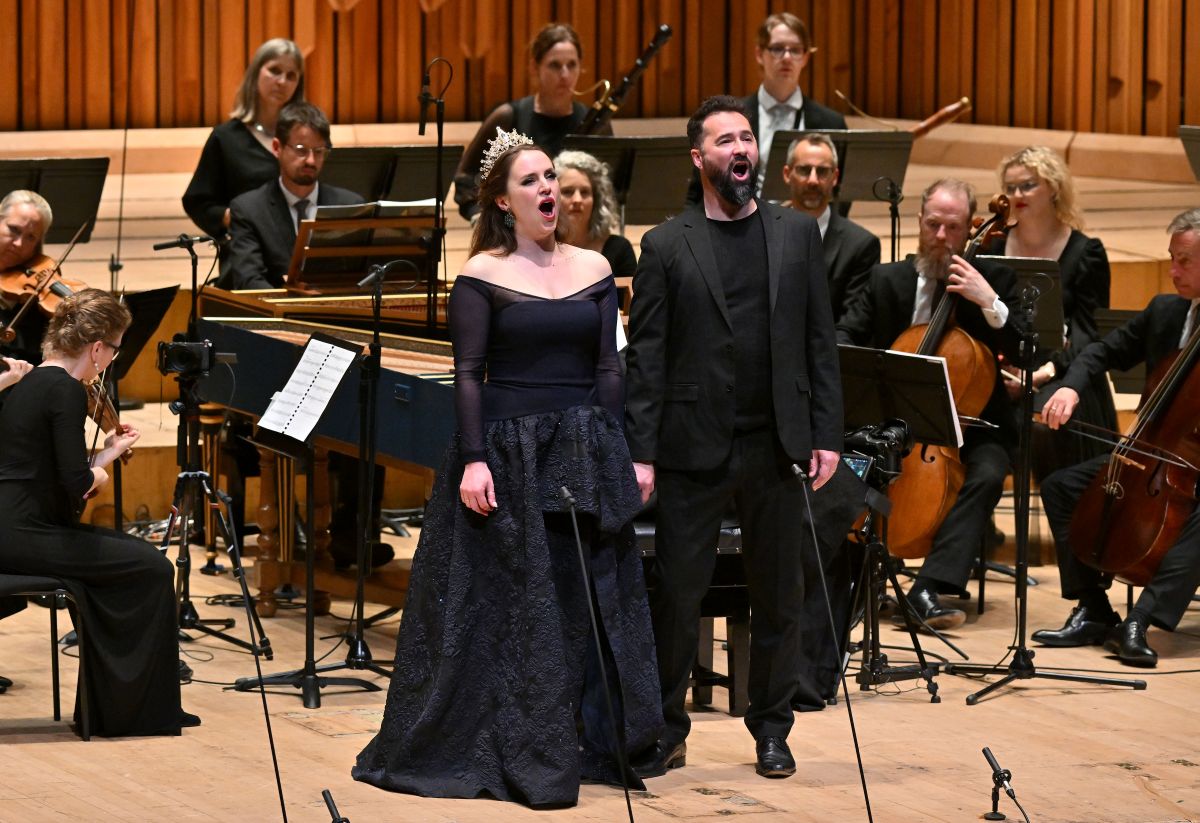Handel’s Giulio Cesare remains one of his top ten operas, and for good reason. It was a resounding success at its 1724 premiere, composed for two of the greatest singers of the era: the castrato Senesino (Cesare) and soprano Francesca Cuzzoni (Cleopatra), each gifted with eight arias. Though rooted in historical events, Handel’s focus is on human fragility—love, power, suffering, and death—rather than political grandeur. His Caesar is no jaded tyrant, but an idealistic young hero.
The role of Cesare was tailor-made to showcase Senesino’s full range. His entrance in the brisk “Presti omai” establishes him as a soldier-hero. The emotional spectrum he traverses is vast: defiance in “Empio, dirò” and “Al lampo dell’armi”; introspection in “Alma del gran Pompeo”; charm and sensuality in “Se in fiorito,” where he duets with solo violin; and sorrow in “Dall’ondoso periglio.” The best-known aria, “Va tacito e nascosto,” sees Cesare compare himself to a stealthy hunter, cleverly mirrored in his duet with a hunting horn.
In the landmark ENO production starring Dame Janet Baker, countertenors were rare, and only Tolomeo was sung by one. Today, with many excellent countertenors, roles like Cesare and Sesto are shared between mezzos and countertenors. All singers here perform without scores, in a semi-staged format that brings real dramatic engagement.
French countertenor Christophe Dumaux is a sympathetic and persuasive Cesare. His speed and clarity in the coloratura of “Empio, dirò” are breathtaking. “Va tacito” and “Se in fiorito” are highlights, showing his agility and refined musicality. An extraordinary moment comes in Act 3, when Dumaux sustains a single unaccompanied note through a subtle crescendo and diminuendo—a masterclass in vocal control and expression.
British soprano Louise Alder captures Cleopatra’s wit and allure, especially while masquerading as her maid, Lydia. Her eight arias are technically assured. “V’adoro pupille” and “Venere bella” glow with pianissimo delicacy, and her dazzling “Da tempeste” is impressively ornamented. Yet, in the tragic “Se pietà” and “Piangerò,” Alder falls short. These arias demand deeper emotional variety and a more nuanced command of language. Her da capos lack the emotional arc and tonal richness that transform mere repetition into psychological revelation.
Scottish mezzo Beth Taylor as Cornelia is a standout. Her sumptuous voice conveys profound grief, especially in “Priva son d’ogni conforto,” sung after the presentation of her husband’s severed head (shockingly delivered in a Waitrose bag). Her duet with Sesto, “Son nata a lagrimar,” sung in haunting parallel thirds, is heartbreakingly restrained. Harry Bicket’s slightly slower tempo deepens the emotional impact—this is the production’s emotional core, and it lingers.
Irish mezzo Paula Murrihy (Sesto) brings energy, but her tone leans soprano-like. “Svegliatevi nel core” lacks depth, and clipped vowels dull its urgency. Da capo ornaments are minimal. She grows more convincing in Act 2.
American countertenor John Holiday (Tolomeo) is visually flamboyant—sparkly heels and a vivid waistcoat—but vocally uneven. While his coloratura is secure, a jarring gear shift between registers compromises line and pitch.
Supporting roles are well-cast: Australian baritone Morgan Pearse (Achilla) and English baritone Thomas Clenhall (Curio) offer warm, well-rounded tone. Chinese countertenor Meili Li (Nireno) has a fresh, clean sound.
Some arias are cut, which unfortunately shortens stage time for secondary characters and diminishes their development. It’s a missed opportunity, as this cast largely deserves more space to shine.
Barbican Hall, Barbican Centre
OPERA IN THREE ACTS
Music by Georg Frederic Handel (1685-1789)
Libretto Nicola Francesco Haym
Conducted by Harry Bicket
Period instrument group Il Pomo d’Oro
First performance 20th February 1724, King’s Theatre, Haymarket, London
Photo Credit Marc Brenner
Cast includes Louise Alder, Christophe Dumaux, Paula Murrihy, Beth Taylor, John Holiday, Meili Li, Morgan Pearse.
Running time 4 hours with two intervals

